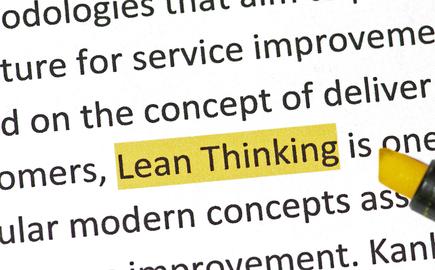
True, the open plan office has a facility for training, where chairs and long tables are provided. But the workstations are perched on elevated desks, which can be reached only if staff are standing up, or using a balance board.
Danie Vermeulen, CEO of Kaizen Institute, says this is in response to a raft of studies highlighting the dangers of a sedentary lifestyle.

He says the nature of the work they do at Kaizen allows them to adopt this concept.
When they hold training sessions in their open plan office, clients see how the concept works, and can get ideas on how to integrate this into their respective organisations.
Stand-up meetings
One of the practices they espouse is the ‘stand-up meeting’.
Every Friday morning, the staff – around four – have a 15-minute stand-up meeting. The staff huddle in front of a white “visualisation” board with markers indicating the progress for ongoing and upcoming projects.
Staff go over what happened the previous week and what could be improved, and discuss activities for the following week.

“This is about focused consolidation, together we all know what is going on,” says Vermeulen. “It is about getting everybody on the same page and focused for the next few days.”
A client recently held a similar stand-up meeting, with somebody in China participating, says Vermeulen. The Web camera was set up and the white board became the touchpoint. For this, a visualisation tool like Droptask was used, which can be on a tablet or a screen.
Back to basics
The company provides training and consultation for implementing the Kaizen method of continuous improvement. The methodology was introduced to the West by Masaaki Imai in his book Kaizen: The Key to Japan’s Competitive Success in 1986.
He says CIOs would recognise this framework, as this weekly meeting adopts the Agile scrum concept, and can be transposed to the whole organisation.
“We are taking the principles of Agile to a meeting, visualising progress and the next steps.
The concept we like to use is a lighthouse. We set up a pilot, a reference point for people.
“Today we find people get distracted quite a bit. So many are overloaded and become bombarded. This is almost like going back to basics, to be able to visualise what is the most important thing to do.”
“A lot of people are recognising the whole concept of multi-tasking is not really that successful,” he says. "This is coming back to doing one or two things at a time, then completing it.
“When you finish one [project], capacity is freed up, and you bring in the next one."
Instead of ongoing transformation or change for the sake of change, Vermeulen says the goal is “ongoing improvement, continuously incrementally making it better”.
The shadow box
The Kaizen concept can also implemented in a seemingly simple office undertaking – make sure the stationery cabinet is stocked regularly and office tools used everyday are kept track of.

There are markers indicating when stocks are running low for certain items and need to be reordered.
Each staff member, meanwhile, has a ‘shadow box’ containing their office supplies, like scissors, staplers and marker pens. The box has cutouts to indicate where these items should be placed. Before leaving the office, the staff will put the items back in their respective spaces.
This practice reduces clutter and ensures the staff know where to find the office tools they use most.

The Kaizen method, he says, is a multi-year strategy. “You are changing culture, fundamentally changing the way people think about root causes and solutions. Not fix symptoms or fire-fighting," he states.
It could start from making a part of the organisation lean, and then apply it to another part, and so on.
“As the organisation’s maturity goes up, they are taken to the next level,” he says.
“The concept we like to use is a lighthouse,” he says. “We set up a pilot, a reference point for people to look at.”
Stick to those proven principles of robust problem solving, and use technology to speed it up and not take shortcuts.
For instance, the Kaizen system will start at the finance section and others would see what this section is doing and will want to do the same.
“We really believe in robust decision making and robust problem solving. Understand the problem, understand the root cause, find the solution to the root cause and implement it,” says Vermeulen. “You have to do this over and over again and not only from a problem solving standpoint."
As for a key advice to organisations, Vermeulen states: “Don’t forget what works really well, stick to those proven principles of robust problem solving, and use technology to speed it up and not take shortcuts.”
Read more: A platform for growth and innovation
Send news tips and comments to divina_paredes@idg.co.nz
Follow Divina Paredes on Twitter: @divinap
Follow CIO New Zealand on Twitter:@cio_nz
Sign up for CIO newsletters for regular updates on CIO news, views and events.
Join the CIO New Zealand group on LinkedIn. The group is open to CIOs, IT Directors, COOs, CTOs and senior IT managers.
